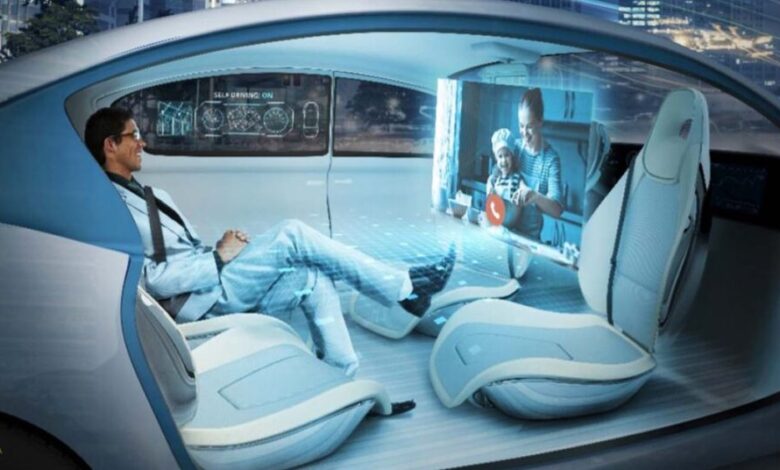Self-Driving Gharry: The Future of Autonomous Transportation

Introduction to Self-Driving Gharrys
Self-Driving Gharry imagine cruising through the bustling streets of a vibrant city without the need to steer, accelerate, or brake. Welcome to the world of self-driving gharrys—an innovative leap into autonomous transportation that could redefine how we navigate urban landscapes. These driverless carriages are not just a glimpse into a futuristic dream; they represent a blend of technology and tradition, offering an exciting new mode of transport rooted in cultural history. As cities evolve and embrace smart technologies, self-driving gharrys stand at the forefront of this revolution. Let’s explore what makes them tick and uncover their potential impact on our lives.
How Do They Work?
Self-driving gharrys harness a mix of cutting-edge technologies to navigate urban landscapes with ease. At their core, they rely on advanced sensors like LiDAR and cameras. These tools create a detailed map of the environment in real-time.
Artificial intelligence plays a pivotal role too. Algorithms process vast amounts of data, allowing the vehicle to recognize obstacles, pedestrians, and road signs instantly. This ability helps ensure safe navigation through complex scenarios.
The integration of GPS enhances location accuracy. By combining these systems, self-driving gharrys can optimize routes while adapting to traffic conditions dynamically.
Communication is key as well. Many vehicles connect with each other and infrastructure elements for improved decision-making. This interconnectedness not only boosts efficiency but also enhances safety across the board.
Together, these components form an intricate network that powers autonomous transportation into the future.
Advantages of Self-Driving Gharrys
Self-driving gharrys promise a revolution in urban mobility. These autonomous vehicles can significantly reduce traffic congestion. With smart routing and real-time data analysis, they navigate efficiently.
Safety is another key advantage. By minimizing human error, self-driving gharrys have the potential to lower accident rates considerably. Advanced sensors and AI technologies work together to create a safer travel environment.
Accessibility also improves with these innovative transports. Individuals unable to drive due to age or disability will find newfound independence and freedom.
Environmental impact cannot be overlooked either. Many self-driving gharrys are designed with electric technology, contributing to reduced emissions and cleaner air in our cities.
Cost savings represent an appealing aspect too. With automated systems streamlining operations, fare prices may decrease over time while still providing reliable service for passengers.
Challenges and Concerns
The emergence of self-driving gharrys brings several challenges and concerns. Safety remains a paramount issue. Despite advances in technology, questions linger about how these vehicles will react to unpredictable situations.
Another concern is regulatory compliance. Governments need to create frameworks that ensure safety while encouraging innovation. The legal landscape is still evolving, making it difficult for companies to navigate.
Public acceptance also plays a crucial role. People may feel uneasy about giving up control to an autonomous vehicle, fearing potential malfunctions or accidents.
Moreover, the impact on employment cannot be ignored. Many drivers could find themselves out of work as automation takes hold in transportation sectors like ride-sharing and public transit.
Cybersecurity risks are a significant factor; hacking into an autonomous system poses dangers not just for passengers but also for pedestrians and other road users alike.
Current Implementation and Future Plans
Cities around the globe are beginning to embrace the concept of self-driving gharrys. Pilot programs in urban areas have already started, with designated routes and test zones established for these autonomous vehicles. Local governments collaborate with tech companies to ensure safety and efficiency.
Future plans involve expanding these pilot projects into larger networks. The goal is seamless integration within existing transportation systems. Companies are exploring partnerships with public transit agencies to enhance accessibility.
Regulatory frameworks are also evolving. Policymakers are drafting guidelines that will support safe deployment while addressing liability concerns.
As technology advances, improvements in navigation and AI capabilities promise smoother operation on crowded streets. Public sentiment plays a crucial role as well; community engagement initiatives aim to educate citizens about this innovation’s benefits.
Investments continue pouring into research and development, indicating a robust future for self-driving gharrys in urban landscapes everywhere.
Impact on Society and the Economy
The introduction of self-driving gharrys is set to reshape urban landscapes. These autonomous vehicles could transform public transportation systems, making them more efficient and accessible.
As they proliferate, we might witness a reduction in traffic congestion. Fewer cars on the road can lead to cleaner air and diminished noise pollution. Cities could adapt their infrastructure to accommodate these innovative modes of transport.
Economically, self-driving gharrys present new business opportunities. From software development to maintenance services, various industries may thrive as technology advances. Job creation in tech sectors will likely counterbalance losses in traditional driving professions.
Moreover, the convenience offered by these vehicles can boost local economies. Increased mobility encourages people to explore neighborhoods they might have overlooked before. This newfound access can support small businesses and stimulate growth across communities without adequate transit options.
Conclusion: The Exciting Potential of Self-Driving Gharrys
The emergence of self-driving gharrys is poised to redefine transportation. By integrating advanced technology with traditional modes of travel, these autonomous vehicles can enhance mobility in urban areas. The potential benefits are vast—from reducing traffic congestion to lowering emissions.
As cities evolve and embrace innovation, self-driving gharrys may become a common sight on the streets. Their ability to navigate complex environments seamlessly positions them as an appealing choice for commuters and tourists alike.
Moreover, the socioeconomic implications could be transformative. With increased access to reliable transport options, communities might thrive like never before. Local businesses could experience growth as more people use this convenient mode of transit.
Embracing this technology brings both excitement and responsibility. It invites us to consider our future cities and how we interact with transportation daily. Self-driving gharrys represent not just a technological advancement but also an opportunity for societal progress.
Exploring their implementation will reveal much about how we envision modern travel—it’s certainly worth keeping an eye on this fascinating development in autonomous transportation.
